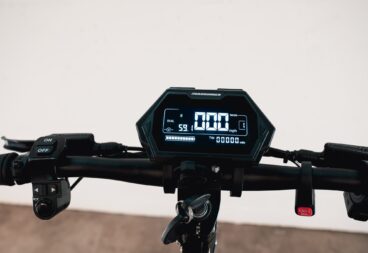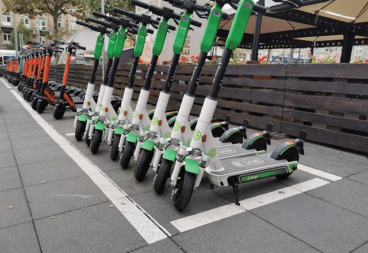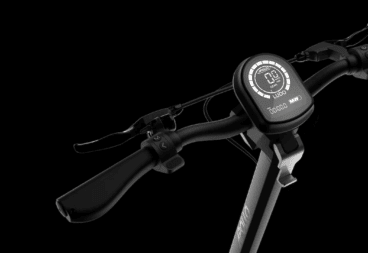This comprehensive beginner’s guide is the ultimate resource for buying an electric scooter. You will learn about price classes, features to consider, tips for riding, maintenance, safety, laws, component parts, micromobility, and electric scooter history, and gain some tools that will help you with your buying research.
Electric Scooter Buying Guide
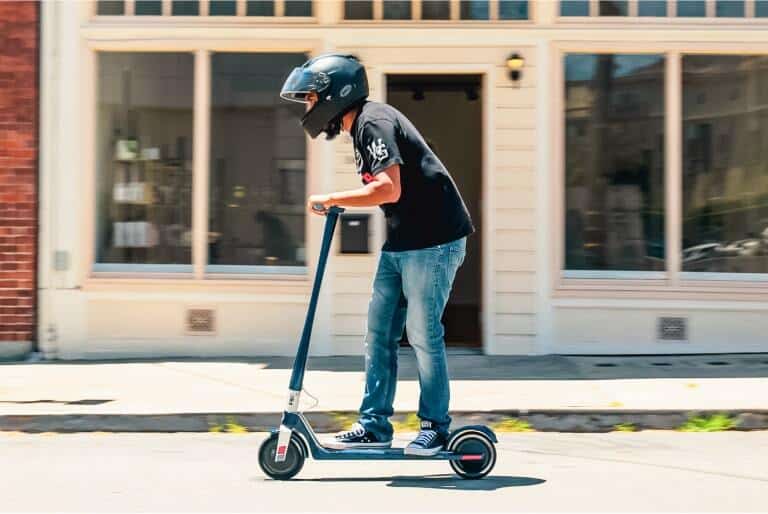
The guide is divided into a few sections. Feel free to use the links below to jump straight to what you’re looking for. If you’re totally new to electric scooters, then it’s helpful to read the whole guide.
Not sure you’re in the right place? We have lots of other guides.
- Our Editor’s Choice of Best Electric Scooters that we’ve reviewed.
- Our recommendations for the best Electric Scooters for New Riders.
- Make in-depth technical and price comparisons.
- Compare real-world performance including range and hill climb tests for the different scooters.
Want to support our hard work? Subscribe to our channel!
Buying an Electric Scooter
Purchasing an electric scooter can be a formidable challenge — there are an overwhelming number of choices and things to consider. A quality electric scooter can easily run you $500 but can cost upwards of $2,000. Throwing a wrench into the matters are numerous dubious sites with “reviews” from people that have never touched a scooter in their life. As you will find in this guide, electric scooters range greatly in style, price, features, origin, and even customer support.
ESG: Your Trusted Source of Hands-On Reviews
We’re Electric Scooter Guide (ESG), a small team that has spent hundreds of hours riding thousands of miles and reviewing 70+ electric scooters since 2018. We’ve ridden every major brand from known distributors and tested more scooters, more rigorously than anyone in the industry. We stay on the pulse of e-scooter news with weekly live shows and love fostering the growing scooter community.
Our hands-on review process includes ESG certified testing of real-world range, top speed, and hill climbing ability. We are very, very thorough. We’re recording details on every aspect — from unboxing and assembly to performance and build. The ESG team inspects every port, cable connection, joint, and even the instruction manual to ensure we’re sharing the most complete information. We report our findings in both written and video reviews, to help you find the best scooter for your needs.
- To buy an electric scooter without doing the research, pick one from our curated ESG Editor’s best electric scooters list.
- If you’re focused on budget, we also have reviews on top-rated scooters organized by $300, $600, $900, $1200, $1600, $2000 and $2500 price ranges.
- If seeing is believing, check out scooters in action in the review videos on our YouTube channel. We regularly publish new scooter reviews and scooter comparisons, discuss trends in micromobility in our Scooter Chat Liveshow, and connect with the electric riding community. Subscribe to our channels to gain a greater understanding of the world of electric scooters, even before you make your first purchase.
Electric Scooter Categories
Budget Electric Scooters (<$300)
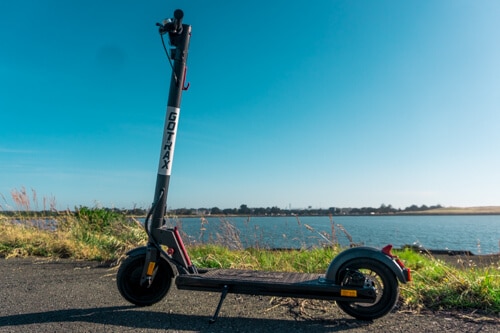
Most scooters that fall into the budget e-scooter class are not recommended for anything but minimal or light recreational use. At this budget price point, expect under-powered motors, low capacity batteries, and weak brakes. However, there are some excellent and very functional electric scooters in this category. They are worth taking a look at if this fits your budget.
See Editor’s Choices for Best Electric Scooters Under $300
Commuter Electric Scooters ($300 to $1200)
The commuter class of electric scooters is the biggest one and therefore divided into three categories. At these price points, we generally find that scooters are fairly balanced in terms of features, quality, and performance.
Budget commuter ($300 to $600)
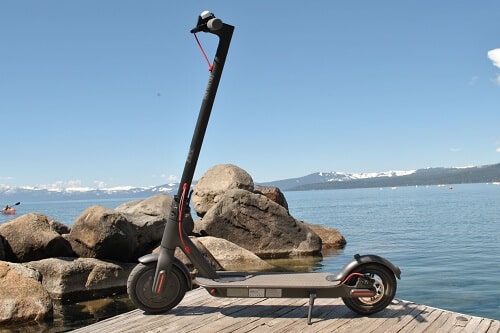
These scooters are great for traveling shorter distances, have a reasonable range, and suitable build quality for daily commuting. Expect occasional repairs over the few years expected lifetime. Budget commuter scooters are best when your commute has relatively smooth surfaces and not a lot of steep hills. They are light enough that you can fold and carry them up stairs once in a while.
See ESG Editor’s Choices for Best Electric Scooters Under $600
Mid-ranged commuter ($600 to $900)
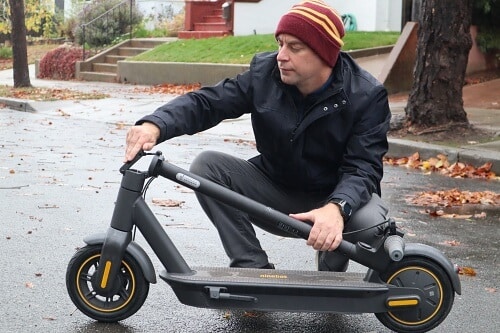
A mid-ranged commuting electric scooter will have a slightly larger battery for more range and possibly more motor power than the budget commuter. You won’t see any dual-motor scooters at this price, but you will see the incorporation of suspension into some models.
See ESG Editor’s Choice for Best Electric Scooters Under $900
Premium commuter ($600 to $1200)
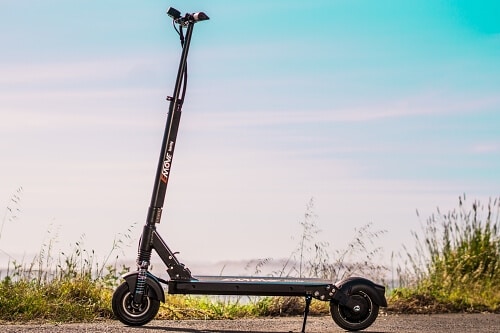
Scooters in the premium commuter class typically add suspension, larger motors, bigger batteries, and better brakes to the budget and mid-range offerings. The ride will be more comfortable, safer, and have a better range due to these upgrades. However, there is a tradeoff with increased weight (around 40 lbs) that makes loading into a car or carrying upstairs more difficult.
See ESG Editor’s Choice for Best Electric Scooter Under $1200
Performance Electric Scooters ($1200 to $1600)
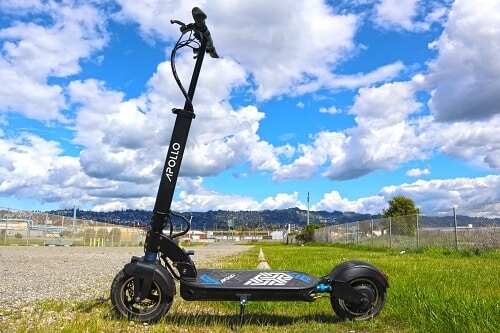
Performance electric scooters start to offer either serious speed or ultra-long range. Many of these scooters incorporate dual motors and sizable battery packs. The longest-ranged scooter in this category can deliver up to 50 miles of real-world range. At this price point, which ranges from $1200 to $1600, you will also start to see some premium features including large tubeless pneumatic tires, semi-hydraulic or hydraulic brakes, powerful lights, and turn signals.
See ESG Editor’s Choice for Best Electric Scooters Under $1600
Extreme Performance Electric Scooters ($2500+)
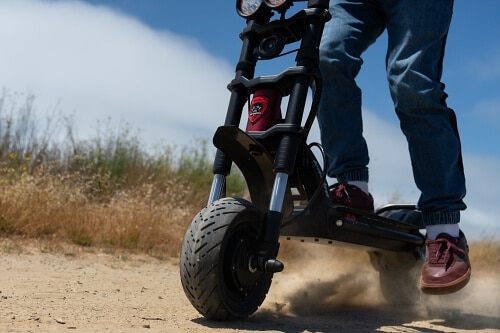
Extreme scooters like these are the highest performing in every category except portability. They have massive, dual motors (some reaching speeds above 40 mph), extended battery life for extreme range (>40 miles), top-notch suspension, and hydraulically-activated disc brakes for stopping at fast speeds. Although still suitable for daily commuting, their larger tires are the only ones built for off-roading. These extreme performance scooters are the heaviest as well (typically +70 lbs), so if you need to fold and carry these scooters, make sure you are comfortable with the weight.
See ESG Editor’s Choice for Best Electric Scooters Under $2500
Electric Scooter Features
What else should you know before buying an e-scooter? Now that we’ve gone over some important factors to think about, let’s dive into some other topics that will likely influence which scooter you choose to purchase, including price, range, weight, top speed, rider weight, and IP rating.
Price
There are always going to be better and worse values in purchasing electric scooters, but basically quality and features improve with price. You won’t be buying an extreme off-road beast scooter for $200. Refer to the electric scooter categories for price brackets.
You can use the comparison database to set min and max limits for the price to a budget range that suits your needs. This will return all scooter options available in that range, and you can jump to our detailed reviews (written and video) for most.
Range
Range refers to the distance a scooter can travel before it runs out of battery power. The range of your electric scooter will depend on various factors, including motor power, rider weight, scooter weight, weather, mode, and average speed. We perform a real-world range test on all scooters to determine a realistic assessment of range.
Our ESG certified range test is performed by the same rider on the same urban route with frequent stops, rough roads, and uphill climbs in the scooter’s highest performance mode. The 165 lb rider pushes the scooter to its limit, maxing out the throttle and riding until the battery dies completely.
A cautious rule of thumb is to take whatever the manufacturer advertises and divide by two. Results from the 2018 electric scooter survey show most manufacturers overestimate by 30% in their range claims.
Like all batteries, as time goes on your battery capacity (and scooter range) will diminish. Most batteries will maintain their integrity for at least 300 to 500 charging cycles, with the best batteries enduring up to 1000 charging cycles before beginning to degrade. Think about your commute and how far you travel in a typical day. Remember that when your scooter runs out of power, no matter the size, you can still kick to push it.
Pro Tip: You can also bring your charger with you or buy an extra charger to leave at your destination. Some high performance scooters have dual charging ports, cutting charge time in half when using two chargers.
Weight
Weight can be a big consideration if you need to fold and carry your scooter, especially on a regular basis.
Most scooters with a reasonable range (>15 miles) will weigh over 25 lbs. Scooters far exceeding 30 lbs will be fairly difficult to carry for long durations. Having a handle or shoulder strap will help bear the weight. Some scooters have extra wheels or a folded configuration that allow them to be rolled like the compact, commuter-friendly Glion Dolly. However, scooters will still have to be carried up stairs or lifted into a vehicle when transporting. Even the highly portable Dolly has folded dimensions of 37 in by 12 in by 8 in and weighs 28 lbs, which can be awkward for some to carry.
If you are in the market for recreational joyriding or beast mode off-roading and not focused on its portability, the weight is not as important a factor as build quality and top speed. If you are looking for a commuter electric scooter to solve the last mile problem on your everyday route, its weight is important to consider.
Think about your commute:
- Will you need to walk up stairs?
- Does your destination have an elevator?
- Do you have permission and space to store your scooter inside (primarily in workplaces)?
- Do you have alternate transportation when poor visibility and/or inclement weather occur?
- Are you able to lift the scooter into a trunk?
Some conditions, like rainy weather, may call for you to take public transportation or a rideshare home. Most drivers will allow you to put your scooter in the trunk, but you still need to be able to maneuver it into the vehicle yourself.
Pro Tip: For comparison, the average weight of a household standup vacuum cleaner is 12 lbs to 18 lbs and many have similar dimensions to large folded scooters. Alternatively, visit a sporting goods store and pick up a few dumbbells or kettlebells to test what weight you can comfortably manage.
Top Speed
Top speed is not a huge factor for most commuters as long as the scooter can reach 15 mph. In fact, some municipalities have laws against going over 15 mph on electric scooters and most restrict scooters from driving on pedestrian sidewalks.
Riding in a car or even on a bicycle at 15 mph feels different than riding an electric scooter at that speed because of the tires and acceleration. In reality, when traveling on roads or in bike lanes, 15 mph to 18 mph is fast enough. If riding in urban traffic regularly, scooters with good acceleration and top speeds in this range can help you avoid accidents. If you are interested in extreme performance scooters, those can go up to 50 mph (like the Kaabo Wolf Warrior 11) and we recommend wearing serious safety gear when traveling at those speeds.
Pro Tip: Always wear a helmet when riding your scooter at any speed.
Rider Weight
The max load or max rider weight is the weight limit that the electric scooter can support. For most scooters, this limit ranges from 220 lbs to 270 lbs. If you weigh more than this, you’ll want to make sure you’re looking at scooters that can support your weight. For safety reasons, you shouldn’t exceed the weight limit specified by the manufacturer.
Keep in mind that even if the scooter is rated for your weight and you’re at the top of the limit, it will be slower and have less range compared to a lighter rider. Also consider if you’ll be carrying a backpack or anything else that will add to the overall weight the scooter will bear. For riders near or above 220 lbs, you should focus on electric scooters with at least a 500-watt motor.
Pro Tip: You can filter the comparison database based on rider weight.
Motor Power
Adult electric scooters have hub motors, which are brushless direct current (BLDC) electric motors that are built into the hub of the wheels. All electric kick scooters have at least one motor while more powerful ones will have dual motors.
Electric motors are rated based on their power consumption, which is expressed in units of watts (e.g., 600 watts). More powerful motors will have greater wattage. Motor power generally starts at 200 watts and goes all the way up to 6270 watts on the Dualtron X.
An average budget commuter scooter, like the Xiaomi Mi M365 has a 250-watt motor; a mid-range commuter scooter like the Fluid FreeRide Horizon has a 500-watt motor; and an extreme performance scooter, like the Kaabo Wolf Warrior 11, has dual 1200-watt motors (or 2400-watt motor power).
For adults, we do not recommend anything under 250 watts for daily commuting. This will be adequate for flat surfaces and very small hills. If you live in an area with steeper hills, think about going to 350 or 500 watts. Even with 500 watts, your scooter will slow down on medium-sized hills. Larger motors will not only help with powering up hills, but they will also get you up to top speed more quickly.
Suspension
Suspension, similar to that in a car, smooths out bumps and indentations in the road and improves ride quality. Without it, and especially if you have solid (airless) tires, you will feel every bump that you travel over. If your commute is longer or has rough terrain to cross, strongly consider purchasing a scooter with suspension.
There are three main types of suspension systems that are typically found on electric scooters: spring, hydraulic or air piston, and rubber suspension. Scooters with the best suspension will have some combination of spring and piston — a combination called coil-over-hydraulic or coil-over-air.
Suspension can be attached to the front, rear, or both wheels. Scooters in the premium commuter class should have either front or rear suspension.
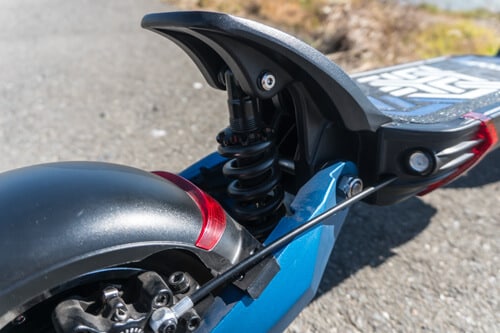
Many scooters forgo suspension in favor of large pneumatic tires that provide damping effects. These can offer a better form of suspension than cheap spring suspensions.
Lighting
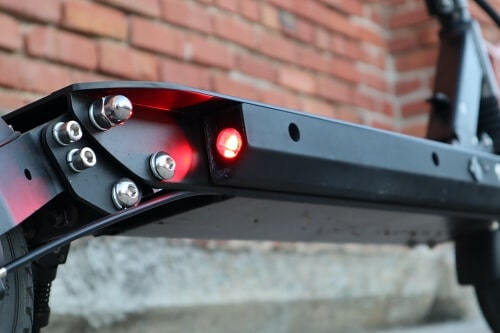
Scooters, like bicycles, can have a white front light and a red rear light. If you ride after dark, it is necessary to have both a front and rear light. Due to the design of electric scooters, they typically do not have very visible rear lights. If you are going to ride at night, strongly consider adding some flashing red rear lights to your helmet or backpack.
Read our guide to electric scooter lighting.
Brakes
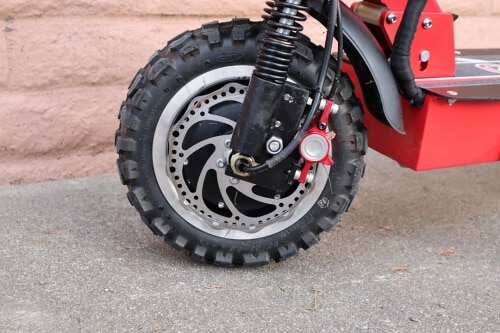
A quality braking system is essential for staying safe and in control while riding an electric scooter. Like those on a car or bicycle, brakes are what slow the electric scooter down. Electric scooter brakes can be broken into two categories: mechanical and electronic.
Mechanical brake systems are those that rely on a physical mechanism to slow the scooter down and include foot, drum, and disc brakes. The typical 15 mph stopping distance for mechanical systems is 20 feet, with the absolute best being under 10 feet.
- Foot brakes, which are activated by pushing your foot down on the rear fender, cause it to rub against the rear tire, slowing it down. This type of brake has stopping power but is not as effective as drum or disc brakes.
- Drum brakes are enclosed inside the wheel hub, are generally lower maintenance than other braking types, and have consistent performance in wet conditions.
- Disc brakes have the most stopping power and are lighter than drum brakes. They are typically found on higher-end premium commuter and high-performance scooters, but may appear on better quality budget commuter scooters as well.
- In our real-world road tests, we found disc and drum brakes to be the most effective.
Electronic braking systems rely on using the motor itself for braking and include strictly electric and regenerative braking systems. Electric and regenerative brakes are the weakest. If you are traveling at 15+mph and need to stop quickly, these alone will not do the job. The typical 15 mph stopping distance using an electronic brake alone is 30 to 40 feet.
Mechanical braking systems will offer much stronger braking than electronic systems. However, electronic systems benefit from not requiring any periodic adjustments or maintenance. Many scooters will have a combination of both electronic and mechanical braking systems. For safety reasons, we recommend scooters that have at least two braking systems in case one fails.
Learn more in our technical guide to electric scooter brakes.
Tires
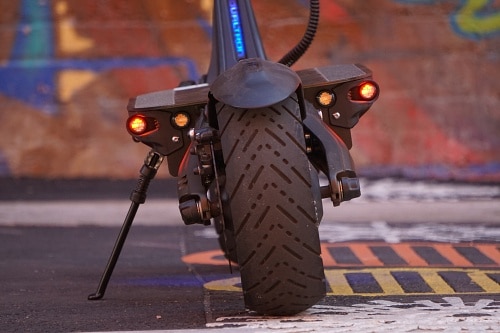
Tires come in two types: solid (airless) tires and pneumatic (air-filled) tires.
Solid tires There are a few varieties of airless tires and these include honeycomb, polymer-filled, and solid. Solid tires are inferior to pneumatic in every way except they have virtually no maintenance required. When riding on solid tires, you’re more likely to feel every bump and even stumble over lines of paint on the road.
Pneumatic tires We always recommend pneumatic tires because they give better ride quality (with or without suspension) and their supple rubber performs much better in adverse road conditions. Some air-filled tires have inner tubes that can be replaced if damaged; other air-filled tires are tubeless. Pneumatic tires have the advantage of shock absorption and better handling (especially in bad weather).
The downside to pneumatic tires is there is more maintenance required than the airless variety. Pneumatic tires are prone to punctures and need to be filled with air when they have low pressure. Pneumatic tires, with tubes and tubeless, are common in all price classes except the budget range, where tires are almost exclusively solid.
Pro Tip: Do not underestimate the improved ride quality you will get with pneumatic tires. These will make a huge improvement when rolling over even minimally bumpy terrain, where road vibration can be very uncomfortable on your feet and legs. Additionally, you can prevent flat tires by following a few simple tips.
Learn more about the differences between pneumatic and solid tires in our electric scooter tire guide.
IP Rating
The ingress protection or IP rating tells you how resistant an electric scooter is to dust and water. The IP rating consists of two numbers, but we focus on the second because it tells you how water-resistant the scooter is. The greater the number is — the more resistant it is to water and moisture.
Not all scooters have an IP rating. If you are planning on riding your scooter in all weather conditions, you will want to invest in one with at least IPx4 water-resistance.
| IP Rating | Meaning |
|---|---|
| IPx0 | No protection |
| IPx1 to IPx3 | Very limited water resistance |
| IPx4 to IPx6 | Suitable for riding in the rain |
| IPx7+ | Can be fully submerged in water |
Pro Tip: You can sort our electric scooter comparison database, based on IP rating (the column is titled “Water”).
Read our guide on Electric Scooter IP Ratings.
Distributors
Where you buy an electric scooter can be almost as important as what you buy. When deciding who to buy from, you have a few options.
- Domestic
- Brick and mortar
- PEV store
- Big box store (e.g., Best Buy, Costco)
- Department store (e.g., Macy’s)
- Online
- Specialty distributors (e.g. Apollo, Fluid Freeride, VORO Motors)
- Big box (e.g., Amazon)
- Brick and mortar
- Direct from China
- e.g. Alibaba / AliExpress
- Crowd-funded Campaigns
Domestic
The ESG Editors tend to favor buying from a good domestic distributor, even though it will generally cost more. A decent electric scooter will cost hundreds or thousands of dollars. The value added from buying an electric scooter from a good domestic distributor will be enormous. These distributors will often provide a good warranty with customer support for troubleshooting, replacement parts, repair, and so on.
Brick and mortar
Generally, the benefits of buying domestically is fast shipping and better post-purchase support. The main downside is that buying domestically tends to be more expensive than buying directly from China.
Local personal electric vehicle (PEV) dealers are a good option if you have any nearby. You can check out scooters in person and the dealers will offer the best post-purchase support. However, they tend to be the most expensive option with the smallest scooter selection.
Online
As an online retailer, Amazon will have the fastest shipping, easiest returns, and a wide selection. However, you’ll have to rely on the manufacturer for post-purchase support after the return window has closed (typically 30 days). For popular scooters, like the Xiaomi Mi M365 with many parts and repair guides readily available, this shouldn’t be a problem.
Specialty distributors are online retailers that import, sell, and provide post-purchase support for electric scooters. Each of these retailers tend to specialize in a specific brand. Some scooter distributors include Apollo, Fluid FreeRide, and VORO Motors. Due to their specialization, they tend to offer a balance of the best prices and post-purchase support.
Direct from China
The benefit of buying direct from China is cost savings, which can be significant. The downsides include:
- Slow shipping time It can sometimes take months to receive an order.
- Meager customer support If there is a major problem you will not be able to return the scooter, though they may be willing to ship you parts to perform repairs yourself.
- Brand authenticity The scooter you buy may be a similar-looking clone of the branded model you really wanted. Some parts may be identical, but others may be different and worse.
Crowdfunded Campaigns
Backing a crowdfunded electric scooter campaign on Kickstarter or Indiegogo can be a very exciting prospect. You can help support new and innovative products — and often get them at a steep discount over what their retail would be.
However, we strongly recommend against backing crowdfunded campaigns unless you are 100% prepared to lose all your money or are willing to wait one to two years for a product.
The history of electric scooter crowdfunded ventures has been fraught; numerous campaigns such as Eon and Unicorn have failed outright, leaving backers empty-handed. Nearly 500 Kickstarter supporters eager to get their hands on the Raine One electric scooter were disappointed in 2021 when the Raine Team announced they would not be issuing refunds even though they are unable to complete production on a single scooter.
Even successful campaigns have burned sellers. Inboard used crowdfunded dollars as an interest-free loan to develop their product, which they decided to release only to the shared market. Mercane led a successful campaign for the WideWheel, but years later many backers claim they still haven’t received anything despite the WideWheel being available to consumers worldwide.
Warranty and Customer Support
As you’re shopping for the best scooter for you, you should also find out whether or not the scooter comes with a warranty for the device, its component parts, and/or maintenance.
As part of our ESG certified scooter review process, we evaluate and outline warranty offerings, including length of term and inclusions. We also learn about the distributors and scooter brands directly from e-scooter riders. Read which brands have proven brand satisfaction in our article on the best scooter brands.
One of the best warranties we’ve seen is from Apollo Scooters, who offer game-changing 24-month warranty on all their scooters.
Along with a strong warranty, dedicated and responsive customer support is an excellent benefit when purchasing an electric scooter. As you familiarize yourself with your new device, you may have questions or concerns about how to properly care for and repair it. Exceptional post-purchase customer support is not available from all distributors, so it’s important to understand the pros and cons depending on which brand you buy from where.
Maintenance
Thinking about maintenance before you buy an electric scooter will save you from unnecessary pain in the future. For example, some electric scooters do not have available replacement parts. Buying one of these scooters will mean that you can only send it back to the manufacturer for repairs.
Frequency of repairs Even the most durable electric scooters will require upkeep. Our owner survey data indicates that most people have two issues per year or every 600 miles requiring maintenance. The most common parts needing repair are tires (flats, low tread), brakes (brake pads, brake adjustments), and fenders (broken, loose).
Preventative maintenance Proactive tune-ups can save you a lot of trouble in the future. Though most electric scooters don’t require regular maintenance on most of their parts, you may need some on your tires or certain bolts.
DIY Another thing to keep in mind is that there isn’t a good infrastructure in place for electric scooter repair as the industry is just forming, so the best option for regular maintenance and repairs is often doing it yourself.
Pro Tip: If you are looking for repair, maintenance or upgrade information, check out our detailed technical guides for electric scooters (more are being added all the time).
Here’s more on where you can get an electric scooter repair.
Summary
Still not sure exactly where to begin?
For a good starting scooter, we recommend something with:
- 15-mile range
- Weighs less than 30 lbs
- Has a 250 watt motor (or larger)
- At least one quality brake (drum or disc)
- Has a front or rear pneumatic tire (if not both)
These basic guidelines are built for first-time riders. You can find models in every price category that meet these conditions, except in the entry-level budget scooters.
Check out our best electric scooters article for our ESG Editor’s expert picks of the top electric scooters.
For more information, become part of the Electric Scooter Guide Facebook Group — the most active Facebook group for electric scooters. You can connect with fellow e-riders and enthusiasts for tips, information, and to organize group rides.d
